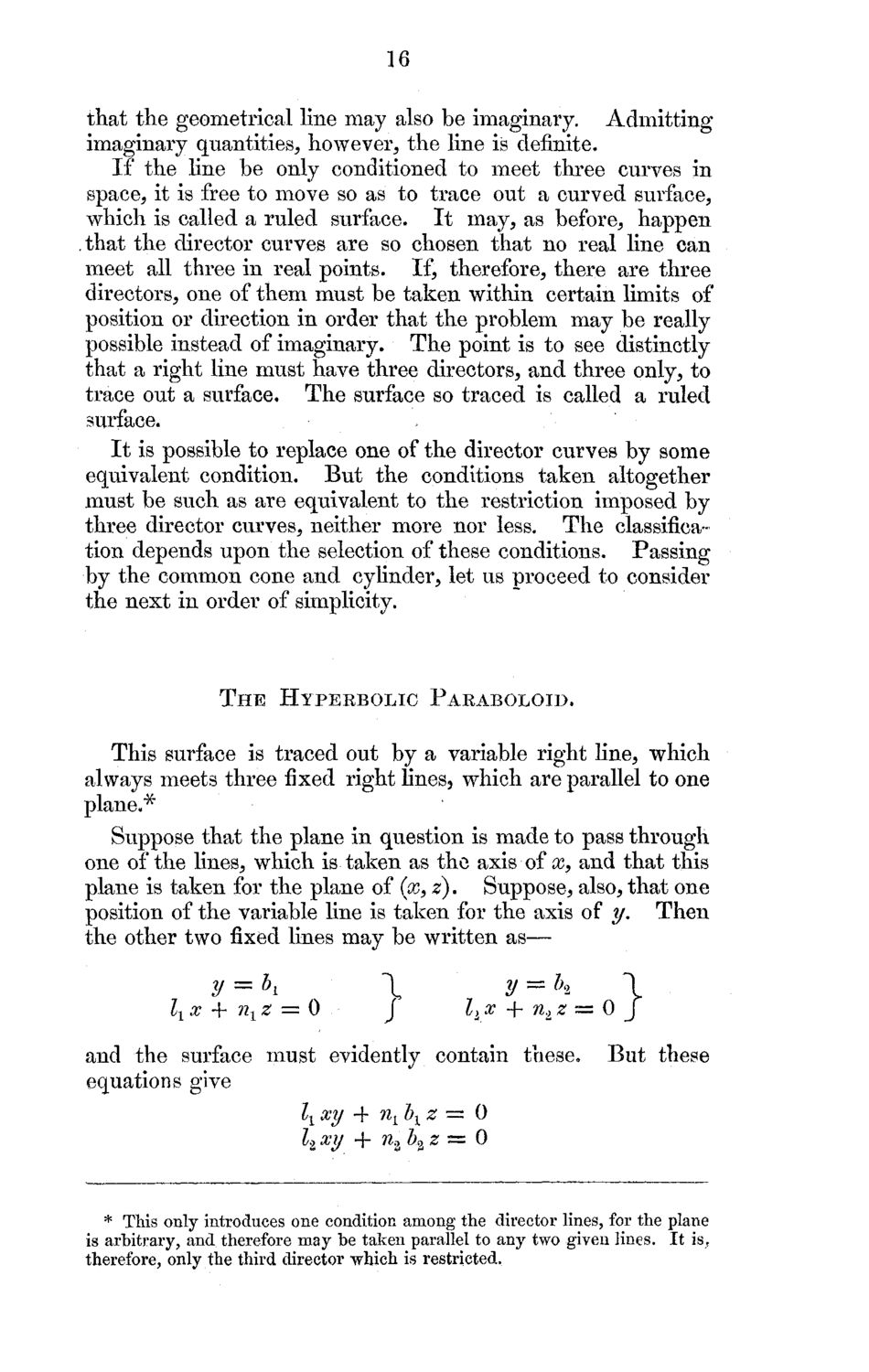| |
| |
Caption: Mathematical Models Catalog of a Collection of Models of Ruled Surfaces
This is a reduced-resolution page image for fast online browsing.

EXTRACTED TEXT FROM PAGE:
16 that the geometrical line m a y also be imaginary. Admitting imaginary quantities, however, the line is definite. If the line be only conditioned to meet three curves in space, it is free to m o v e so as to trace out a curved surface, which is called a ruled surface. It may, as before, happen that the director curves are so chosen that no real line can meet all three in real points. If, therefore, there are three directors, one of them must be taken within certain limits of position or direction in order that the problem m a y be really possible instead of imaginary. T h e point is to see distinctly that a right line must have three directors, and three only, to trace out a surface. T h e surface so traced is called a ruled surface. It is possible to replace one of the director curves by some equivalent condition. B u t the conditions taken altogether must be such as are equivalent to the restriction imposed by three director curves, neither more nor less. T h e classification depends upon the selection of these conditions. Passing by the c o m m o n cone and cylinder, let us proceed to consider the next in order of simplicity. The Hyperbolic Paraboloid. This surface is traced out by a variable right line, which always meets three fixed right lines, which are parallel to one plane."* Suppose that the plane in question is m a d e to pass through one of the lines, which is taken as the axis of x, and that this plane is taken for the plane of (x, z). Suppose, also, that one position of the variable line is taken for the axis of y. T h e n the other twofixedlines m a y be written a s — y-h \ y-h \ lxx -f nxz = 0 J l±x -f ntz = 0 J and the surface must evidently contain these. But these equations give lxxy 4- nlblz •=: 0 l%xy + n % b % z — 0 * This only introduces one condition among the director lines, for the plane is arbitrary, and therefore m a y be taken parallel to any two given lines. It is, therefore, only the third director which is restricted,
| |